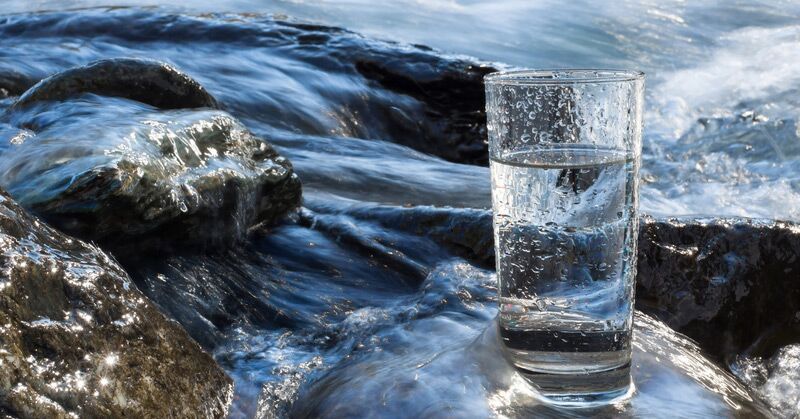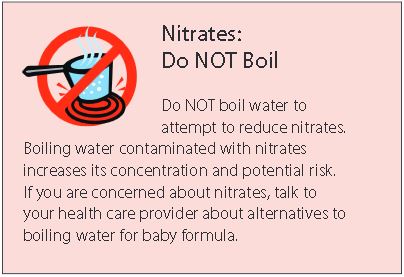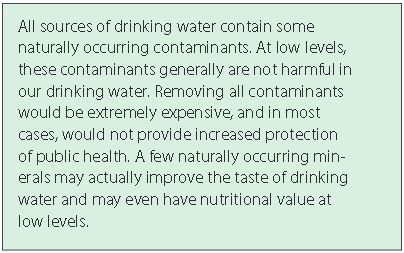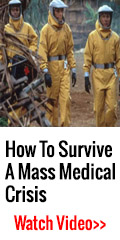Click Here To Join Our Telegram Channel for FREE daily tutorials!

As development in our modern society increases, there are growing numbers of activities that can contaminate our drinking water. Improperly disposed-of chemicals, animal and human wastes, wastes injected underground, and naturally occurring substances have the potential to contaminate drinking water. Likewise, drinking water that is not properly treated or disinfected, or that travels through an improperly maintained distribution system, may also pose a health risk. Greater vigilance by you, your water supplier, and your government can help prevent such events in your water supply.
Contaminants can enter water supplies either as a result of human and animal activities or because they occur naturally in the environment. Threats to your drinking water may exist in your neighborhood or may occur many miles away.
Microbial Contamination:
The potential for health problems from microbial-contaminated drinking water is demonstrated by localized outbreaks of waterborne disease. Many of these outbreaks have been linked to contamination by bacteria or viruses, probably from human or animal wastes. For example, in 1999 and 2000, there were 39 reported disease outbreaks associated with drinking water, some of which were linked to public drinking water supplies.
Chemical Contamination From Fertilizers:

Nitrate, a chemical most commonly used as a fertilizer, poses an immediate threat to infants when it is found in drinking water at levels above the national standard. Nitrates are converted to nitrites in the intestines. Once absorbed into the bloodstream, nitrites prevent hemoglobin from transporting oxygen. (Older children have an enzyme that restores hemoglobin.) Excessive levels can cause “blue baby syndrome,” which can be fatal without immediate medical attention. Infants most at risk for blue baby syndrome are those who are already sick, and while they are sick, consume food that is high in nitrates or drink water or formula mixed with water that is high in nitrates. Avoid using water with high nitrate levels for drinking. This is especially important for infants and young children, nursing mothers, pregnant women and certain elderly people.
Lead Contamination:

Lead, a metal found in natural deposits, was commonly used in household plumbing materials and water service lines in old times. The greatest exposure to lead is swallowing lead paint chips or breathing in lead dust. But lead in drinking water can also cause a variety of adverse health effects. In babies and children, exposure to lead in drinking water above the action level of lead (0.015 milligrams per liter) can result in delays in physical and mental development, along with slight deficits in attention span and learning abilities. Adults who drink this water over many years could develop kidney problems or high blood pressure. Lead is rarely found in source water but enters tap water through corrosion of plumbing materials. Very old and poorly maintained homes may be more likely to have lead pipes, joints, and solder. However, new homes are also at risk: DId you know that pipes legally considered to be “lead-free” may contain up to eight percent lead. These pipes can leach significant amounts of lead in the water for the first several months after their installation.
How Safe Is The Drinking Water In My Household Well?
EPA regulates public water systems; it does not have the authority to regulate private wells. Approximately 15 percent of Americans rely on their own private drinking water supplies ( Drinking Water from Household Wells, 2002), and these supplies are not subject to EPA standards. Unlike public drinking water systems serving many people, they do not have experts regularly checking the water’s source and its quality before it is sent to the tap. These households must take special precautions to ensure the protection and maintenance of their drinking water supplies.
How Much Risk Can I Expect?

The risk of having problems depends on how good your well is—how well it was built and located, and how well you maintain it. It also depends on your local environment. That includes the quality of the aquifer from which your water is drawn and the human activities going on in your area that can affect your well. Several sources of pollution are easy to spot by sight, taste, or smell. However, many serious problems can be found only by testing your water. Knowing the possible threats in your area will help you decide the kind of tests you may need.
Get Your Water Tested Periodically
The best answer is to test your water every year for total coli-form bacteria, nitrates, total dissolved solids, and pH level.
If you suspect other contaminants, test for these as well. As the tests can be expensive, limit them to possible problems specific to your situation. Local experts can help you identify these contaminants. You should also test your water after replacing or repairing any part of the system, or if you notice any change in your water’s look, taste, or smell. Often, county health departments perform tests for bacteria and nitrates. For other substances, health departments, environmental offices, or county governments should have a list of state-certified laboratories. Your State Laboratory Certification Officer can also provide you with this list. Call the Safe Drinking Water Hotline for the name and number of your state’s certification officer. Any laboratory you use should be certified to do drinking water testing.

How Can I Conserve Water?
The national average cost of water is $2.00 per 1,000 gallons. The average American family spends about $474 each year on water and sewage charges. American households spend an additional $230 per year on water heating costs. By replacing appliances such as the dishwasher and inefficient fixtures such as toilets and showerheads, you can save a substantial amount each year in water, sewage, and energy costs. There are many ways to save water in and around your home. Here are the five that might get the best results:
• Stop Leaks.
• Replace Old Toilets with models that use 1.6 gallons or less per flush.
• Replace Old Clothes Washers with EPA Energy Star certified models.
• Plant the Right Kind of Garden that requires less water.
• Provide Only the Water Plants Need.
Nearly 14 percent of the water a typical homeowner pays for is never even used—it leaks down the drain.
Sources: www.epa.gov/safewater
This Crazy Off Grid Device Literally Makes Drinkable Water From Fresh Air:
According to NASA, the U.S. is expecting a 100-YEAR LONG MEGADROUGHT.
It's already begun. Ask the farmers in California. They know.
Every survivalist knows that water is of critical importance. You NEED an independent water source that you can count on!
As an interesting "survival rehearsal" - imagine that you turned the tap on right now and nothing came out. How long would you last?
But what if there was another water source literally hidden in plain sight. That's right, I'm talking about the atmosphere!
The amazing thing about getting water from the natural moisture in the air... is that it is ALWAYS available.
This gives you real water security!
Learn more about how to tap into "Nature's secret water reservoir" and stay hydrated when TSHTF!
Watch the video:
😳 What Tinnitus Does To Your Brain Cells (And How To Stop It)
After 47 years of studies and countless brain scans done on more than 2,400 tinnitus patients, scientists at the MIT Institute found that in a shocking 96% of cases, tinnitus was actually shrinking their brain cells.
As it turns out, tinnitus and brain health are strongly linked.
Even more interesting: The reason why top army officials are not deaf after decades of hearing machine guns, bombs going off and helicopter noises…
Is because they are using something called "the wire method", a simple protocol inspired by a classified surgery on deaf people from the 1950s...

I Can't Help Showing This Off:
If you haven't heard of Claude Davis yet do yourself a huge favor and watch this video.
One of the smartest guys I ever had the pleasure of meeting, Claude set-up a unique prepping system that changed his life forever.
I already tried it myself and let me tell... you I was completely blown away... His surprising tactics could make your life easier and give you the peace of mind you deserve.
Don't just take my word for it... watch his short video and decide for yourself.

Most People Don't Have The Guts To Try This:
An amazing discovery in an abandoned house in Austin, Texas: A lost book of amazing survival knowledge, believed to have been long vanished to history, has been found in a dusty drawer in the house which belonged to a guy named Claude Davis.
Remember... back in those days, there was no electricity... no refrigerators... no law enforcement... and certainly no grocery store or supermarkets... Some of these exceptional skills are hundreds of years of old and they were learned the hard way by the early pioneers.
>> Click here to find out about them now
We've lost to history so much survival knowledge that we've become clueless compared to what our great grandfathers did or built on a daily basis to sustain their families.
Neighbors said that for the last couple of years Claude has tried to unearth and learn the forgotten ways of our great-grandparents and claimed to have found a secret of gargantuan proportions. A secret that he is about to reveal together with 3 old teachings that will change everything you think you know about preparedness:
>>> Click Here To Watch His Short Video <<<

More Off-Grid And Survival Resources:

What REALLY Happens When You Bury a Shipping Container? (Hint: It's A Bit Crazy...)
Shipping containers are all the rage - but if you are thinking about buying one, you MUST watch this video first:
There's a general belief that if you bury a shipping container you can create an awesome root cellar / storm shelter / survival bunker.
But is a shipping container strong enough to handle the pressure?
Watch the video to see what happens:
What Really Happens When You Bury a Shipping Container? (Click To Watch Video)










